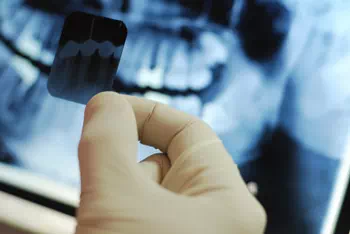 Dental Wastes
Dental Wastes
This section of HERC covers waste management and reduction of the common dental wastes. The topics include:
- X-ray Fixer
- X-ray Developer
- Dental Film
- Lead Foil
- Cleaners for X-ray Developer Systems
- Digital Imaging (waste reduction)
Used X-ray fixer is a hazardous waste (RCRA waste code D011) because of its high silver content (the regulatory level is 5 mg/l silver, used fixer typically contains 3,000 to 8,000 mg/l of silver). As such, it cannot be sewered or disposed of as common solid waste.
There are three common ways of dealing with used fixer:
- dispose of it off-site as a hazardous waste,
- pay someone that operates a silver recovery unit to take your fixer, or
- use a silver recovery unit on-site.
From a regulatory standpoint, sending fixer off-site for recovery is significantly less burdensome than sending it to a disposal site. For starters, to send used fixer to a disposal site, you must contract with a registered hazardous waste transporter; whereas, a common carrier can be used to send silver-bearing materials to a recovery facility, such as a refiner. In general, under RCRA, if waste is destined for precious metals recovery then reduced standards apply. These materials are subject to administrative requirements only, including obtaining an EPA identification number, complying with recordkeeping requirements, using a manifest when shipping materials off site, and complying with land disposal restrictions notification requirements (40 CFR 261.6 Requirements for recyclable materials).
On-site silver recovery is a possibility, but, it is often the most expensive alternative. Most human dental offices generate between 0.5 and 1.0 gal./month of used fixer. Veterinary offices typically generate much less. The cost of a silver recovery unit ($200 or more) to process this quantity, plus the operation and maintenance costs (typically $100 to $400/year) generally exceed the cost of having an outside service pick-up and process the waste (usually about $4/gal.).
If you use a silver recovery unit, the liquid that has run through the unit may be sewered if approved by your city/county wastewater treatment plant and the discharge meets your state and local standards (most state/local standards are between 0.1 ppm to 5.0 mg/l silver). To meet discharge standards, you may need to use two recovery units in series to be certain that most of the silver is recovered. Although recovering silver on-site can eliminate off-site shipping, in most states, hazardous waste rules still require you to report the fixer waste on your Hazardous Waste Annual Report and the Notification of Hazardous Waste Activity (if these rules apply).
For additional information and guidance, see EPA's publication: RCRA in Focus – Photo Processing.
Developer solutions are typically not hazardous waste because of their low silver content (usually below the regulatory level of 5 mg/l silver) and lack of other constituents or characteristics that would make it hazardous waste. However, keep in mind that the burden of determining if your waste is hazardous is your responsibility and if there is any concern, then testing should be performed.
Waste developer should not be mixed with fixer, otherwise, the combined solution will most likely be a hazardous waste. Unfortunately, some development units mix the fixer and developer after they are spent, making the entire solution hazardous waste. in such cases, consider changing or modifying your equipment (you may be able to purchase an adapter kit to keep the fixer and developer separate).
In most areas, used waste developer can be sewered, although, you should check with your local wastewater treatment plant for any restrictions or guidance.
Unused developer typically cannot go down the drain because it contains 1 to 5% hydroquinone. Although unused developer is not hazardous under RCRA (either by listing or characteristic), many states and local governments restrict disposal of hydroquinone. This is not an issue with used developer since hydroquinone is consumed in the developing process.
Used x-ray film may contain sufficient amounts of silver to be a hazardous waste (film with large dark areas contains more silver than film with smaller dark areas). The silver on film can be reclaimed. Often reclamation companies that accept used fixer also often take x-ray film.
Lead foil that shield X-ray film or protective lead shields should not be disposed of in the trash. These materials are hazardous waste (D008) unless they are recycled for their scrap metal content. Studies suggest that a high percentage of dentists are presently recycling lead foil. Companies which recycle dental amalgam or fixer often also accept lead waste.
Cleaners for X-ray Developer Systems
Many cleaners for X-ray developer systems contain chromium (or "chromate") and are hazardous waste (D007) when discarded. Also, some developer system cleaners meet the definition of corrosiveness or reactivity (contain oxidizing chemicals) and may need to be handled as hazardous waste when spent. The onus for such determinations is on the generator of the waste, so be certain to fully investigate these materials. One source of information is the Material Safety Data Sheet (MSDS). Although MSDSs contain sparse information with regard to RCRA, you can at least determine if the product contains chromium.
As an alternative, it is easier and cheaper to use a system cleaner that does not contain chromium or other components that would cause it to be hazardous when spent. Often "environmentally safe cleaners" are as effective as the chromium-based products.
Many dental offices are now avoiding the hassles and costs associated with used photographic fixer and associated wastes by installing digital imaging (dental radiographs) equipment. Digital imaging is a dry system; no liquid chemicals are used in taking and developing the image. Because digital imaging uses a laser and computer system, no waste is produced from the imaging process. Ultimately waste will include outdated electronics, video cards and possibly paper images, if they are printed. The American Dental Association website has various resources that describe this process. For starters, see Digital radiographs Imaging technology for the dental office. ADA also sponsors workshops covering this topic.



